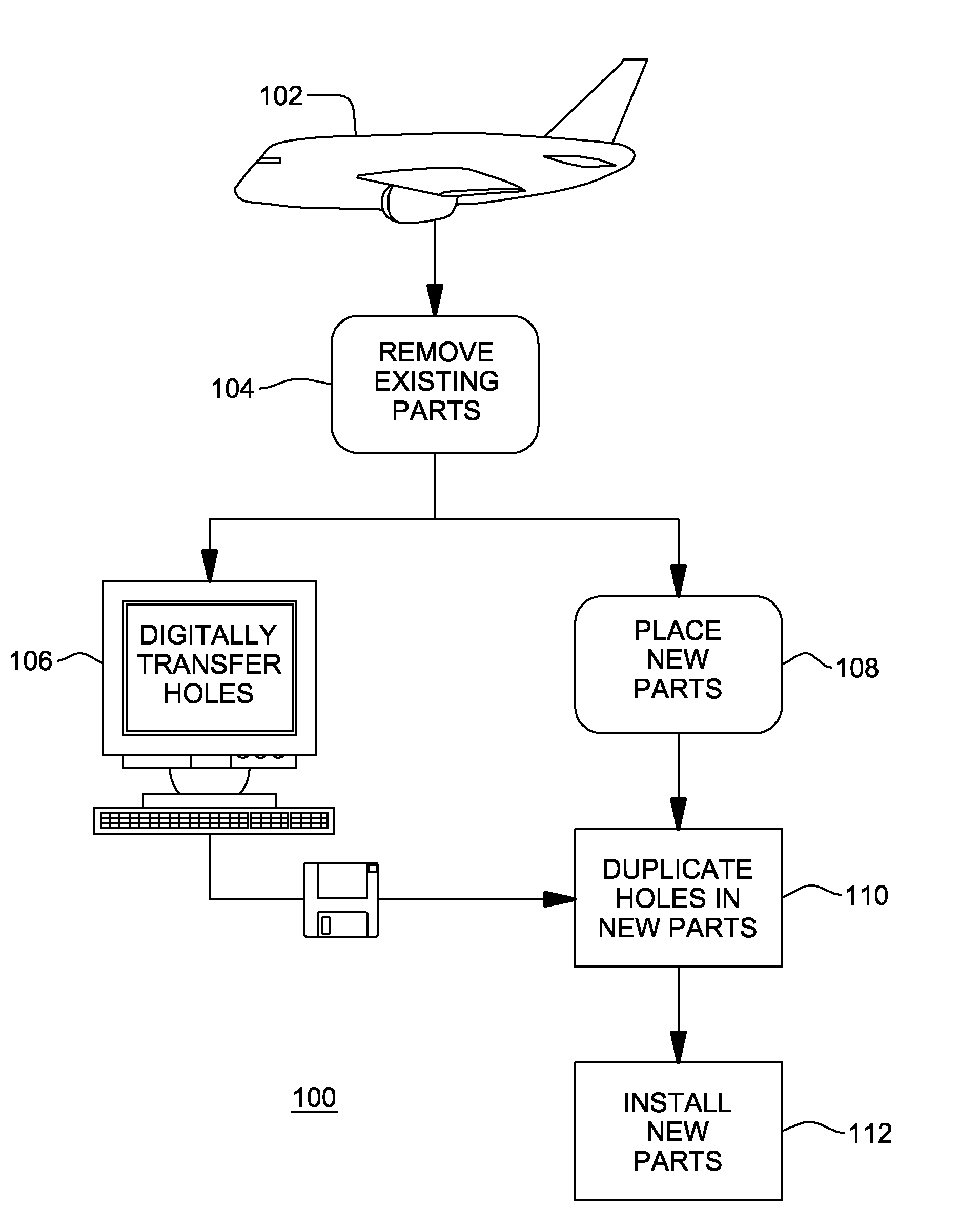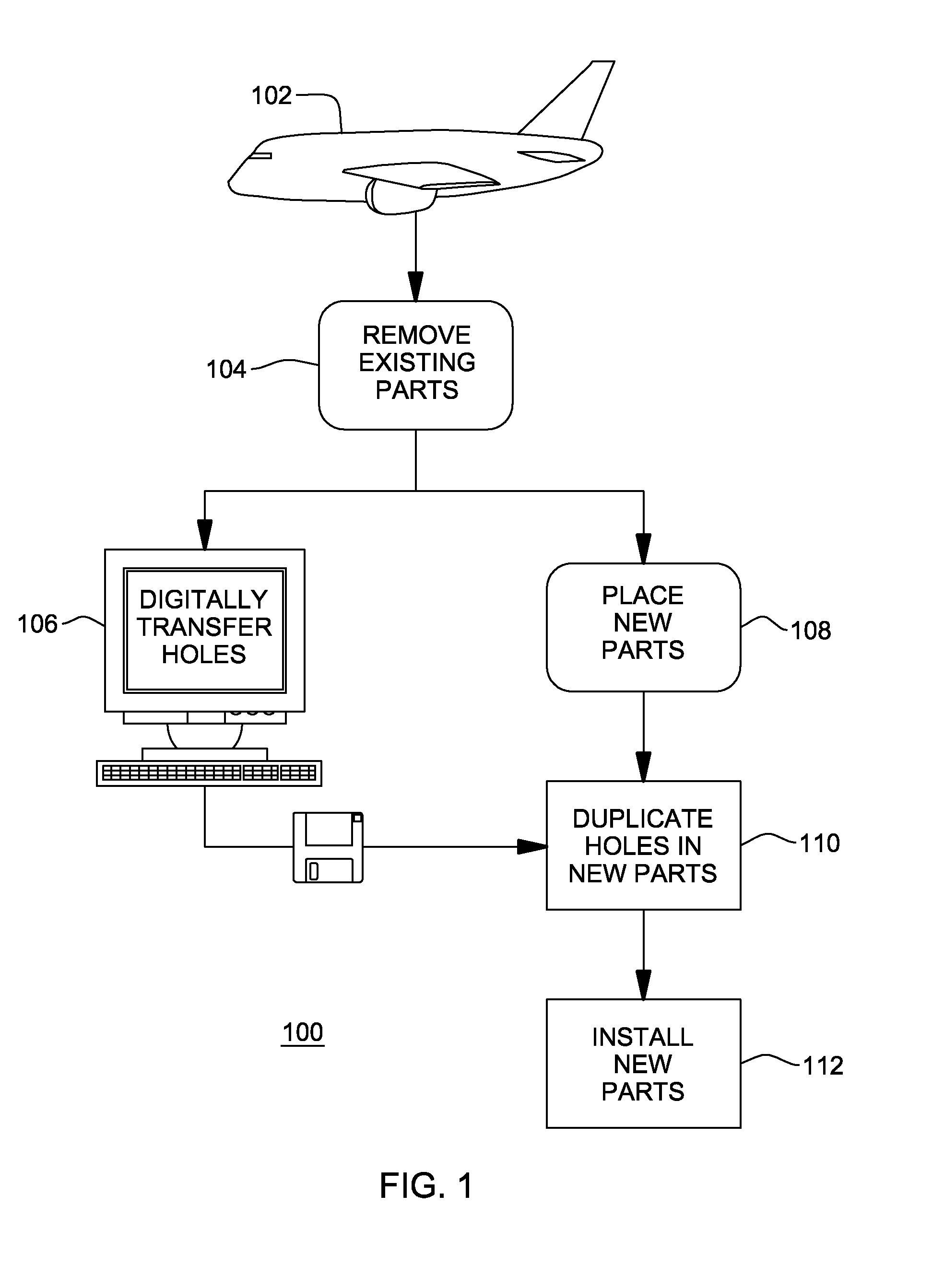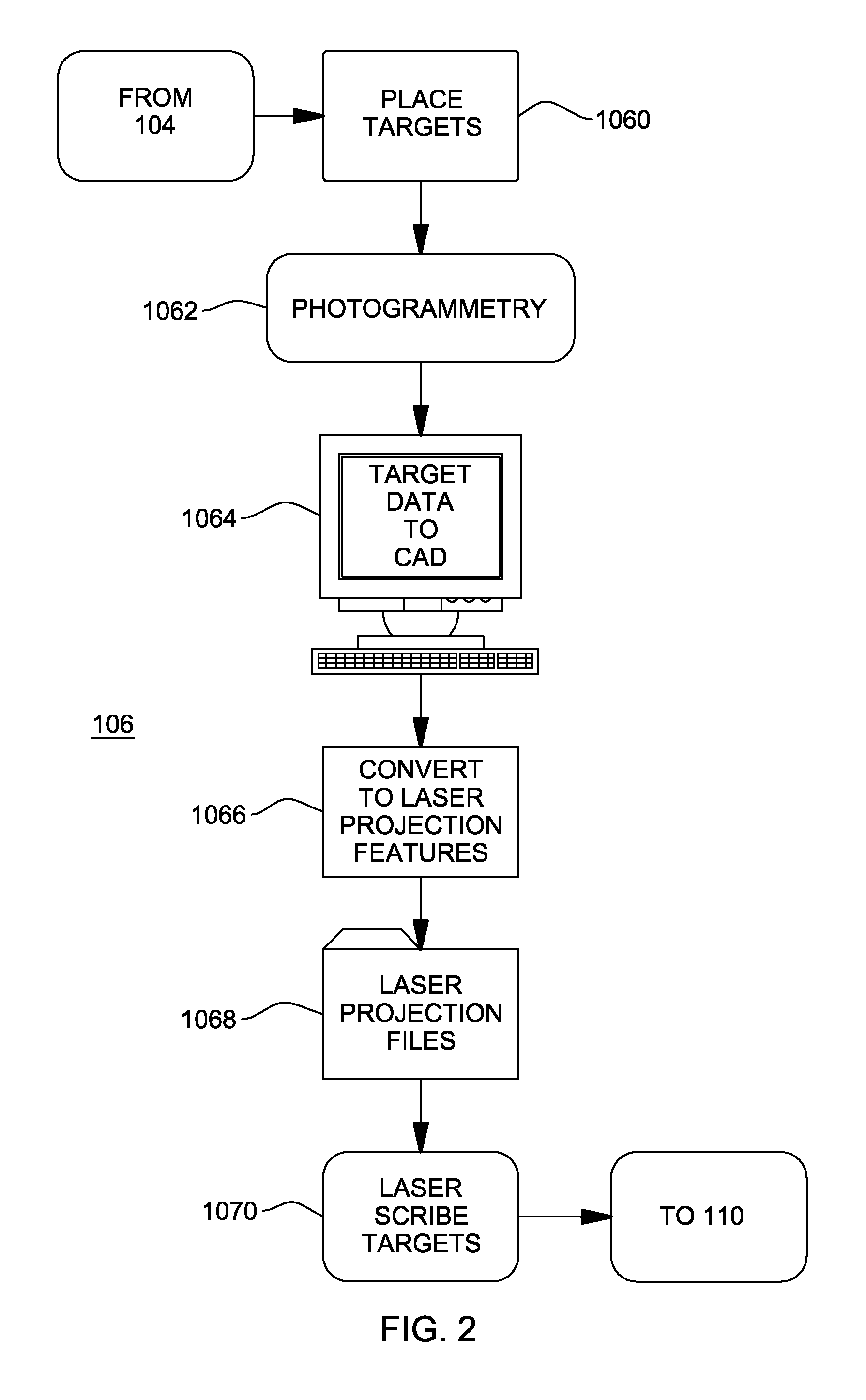Method of rapid hole transfer to replacement parts
a technology of replacement parts and rapid transfer, applied in the field of aircraft maintenance, can solve the problems of limiting mate drilling, ineffective traditional prior art approaches, and inability to precisely mate the replacement parts, so as to reduce the cost of quality, reduce labor costs, and efficiently mate new parts
- Summary
- Abstract
- Description
- Claims
- Application Information
AI Technical Summary
Benefits of technology
Problems solved by technology
Method used
Image
Examples
Embodiment Construction
[0016]Turning now to the drawings and more particularly, FIG. 1 shows a flow diagram example 100 of steps in providing replacement parts with precisely located holes that accurately match existing hole locations and sizes according to an advantageous embodiment of the present invention. Existing hole locations and dimensions are gathered, electronically with respective centerlines. The holes are mapped to targets on new replacement parts, projected / printed on the new replacement parts and then, transferred to the replacement parts for efficient field assembly. Since the holes on the replacement parts match holes on the existing part (the part being replaced), replacement is significantly streamlined. Notably, custom fitted replacements exactly match existing parts, even for large applications such as wing skin replacements.
[0017]It should be noted that although the invention is described herein with respect to replacing parts on aircraft, this is for example only and not intended as...
PUM
| Property | Measurement | Unit |
|---|---|---|
| photosensitive | aaaaa | aaaaa |
| structure | aaaaa | aaaaa |
| hole diameters | aaaaa | aaaaa |
Abstract
Description
Claims
Application Information
 Login to View More
Login to View More - R&D
- Intellectual Property
- Life Sciences
- Materials
- Tech Scout
- Unparalleled Data Quality
- Higher Quality Content
- 60% Fewer Hallucinations
Browse by: Latest US Patents, China's latest patents, Technical Efficacy Thesaurus, Application Domain, Technology Topic, Popular Technical Reports.
© 2025 PatSnap. All rights reserved.Legal|Privacy policy|Modern Slavery Act Transparency Statement|Sitemap|About US| Contact US: help@patsnap.com



